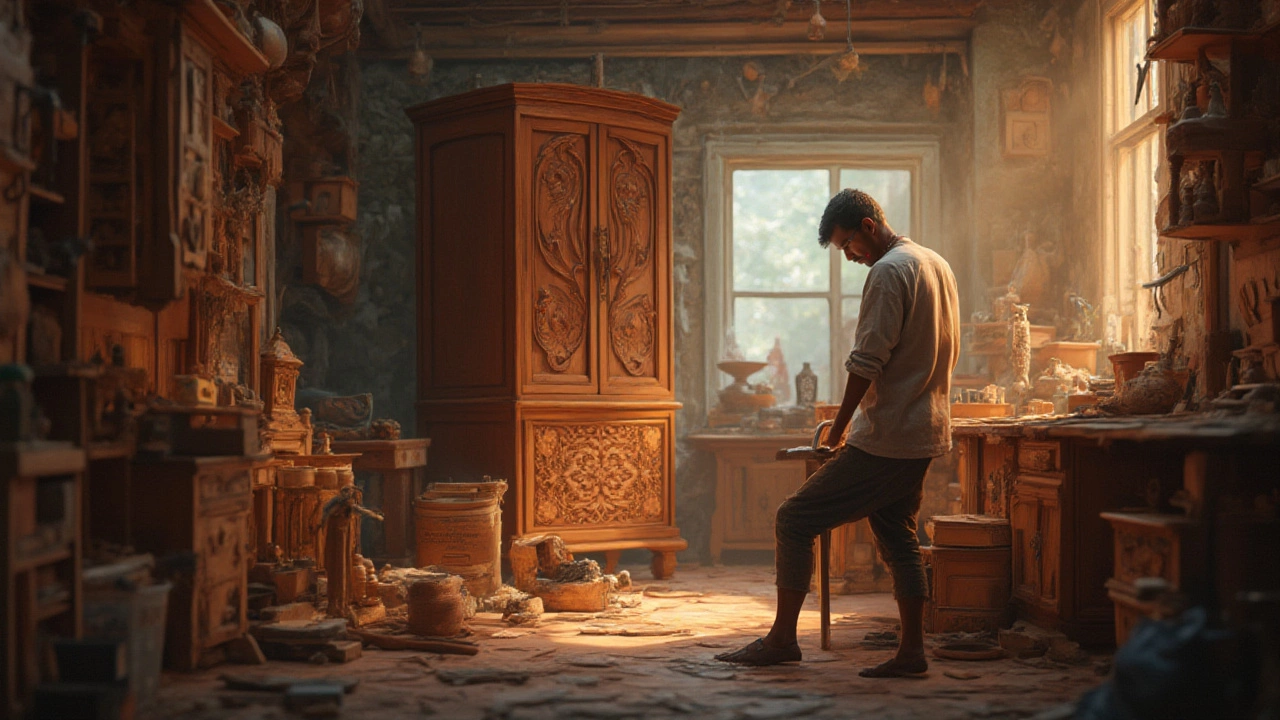Wardrobes: Practical Tips, Trends, and How to Choose the Right One
If you’re scrolling through furniture options, you’ve probably seen both wardrobes and closets and wondered what the real difference is. In plain terms, a wardrobe is a free‑standing piece with doors, while a closet is built into the wall. Knowing that simple split helps you pick the right storage for your bedroom or hallway.
What Makes a Good Wardrobe?
A good wardrobe starts with the right size. Measure the space from floor to ceiling, then add a few inches for the door swing. Height matters because taller units give you more hanging space without crowding the floor. Look for sturdy frames—solid wood or metal—because flimsy construction leads to sagging shelves and noisy doors.
Internal layout is the next big factor. Adjustable shelves let you switch from storing shoes to folded sweaters. A pull‑out tray works wonders for accessories, and a hanging rod at the right height (around 66‑68 inches) keeps longer coats from dragging. If you have a small room, consider a wardrobe with mirrored doors; you get extra visual space and a handy mirror.
Organizing Your Wardrobe Like a Pro
Start by emptying everything and sorting into keep, donate, and store piles. This step alone can free up a lot of room. Then, group similar items together—shirts with shirts, pants with pants. Use matching hangers for a uniform look; the visual difference between a line of shirts on wooden hangers vs. mixed plastic ones is huge.
Maximize vertical space with cascading hangers for shirts or a second hanging rod for short items like skirts. Add slim storage bins for seasonal pieces you don’t need year‑round. Label the bins so you can grab what you need without digging.
Don’t forget lighting. A simple LED strip on the inside of the wardrobe door makes it easier to see what’s inside and adds a modern touch. If you have a walk‑in wardrobe, consider a recessed ceiling light for even illumination.
When it comes to style, choose a finish that blends with your room’s décor. Dark wood adds a classic vibe, while a white or pastel finish keeps the space feeling airy. If you love a cohesive look, match the wardrobe finish to your bedroom's other furniture—like a bedside table or dresser.
Finally, protect your clothes. Use breathable garment bags for delicate items and avoid plastic covers that trap moisture. A small dehumidifier in the room can prevent mold, especially in humid climates.
Whether you call it a wardrobe or a closet, the goal is the same: keep your clothes organized, accessible, and looking good. With the right size, smart internal layout, and a few simple organizing tricks, you’ll get the most out of any storage piece.
Why Are Wardrobes So Expensive? The Real Reasons Behind High Wardrobe Prices
Ever wonder why wardrobes are so expensive? Learn what drives up the price of wardrobes, from craftsmanship and materials to hidden costs you never thought about.
The English of Wardrobes: Unraveling the Secrets of Your Closet
In this article, we explore the world of wardrobes, from their historical evolution to modern design features. Understanding how different styles and materials can transform your space can help you choose the best wardrobe for your needs. We also provide practical tips for maximizing storage and maintaining organization in any wardrobe. This guide offers insights into making your wardrobe both functional and stylish.






